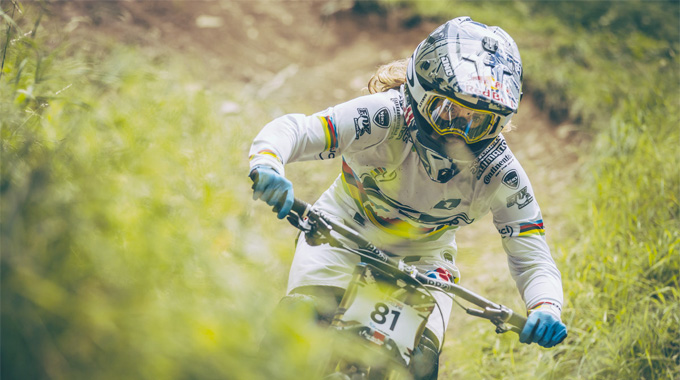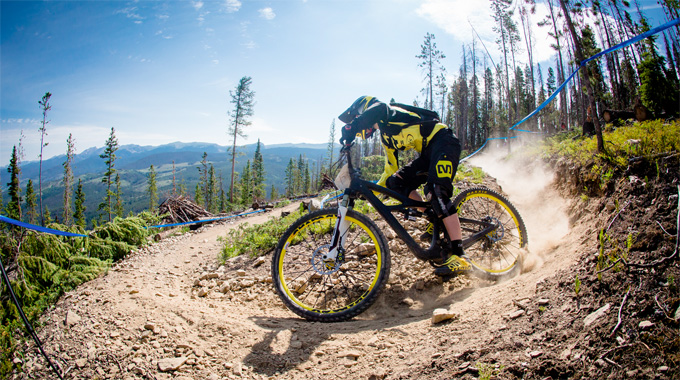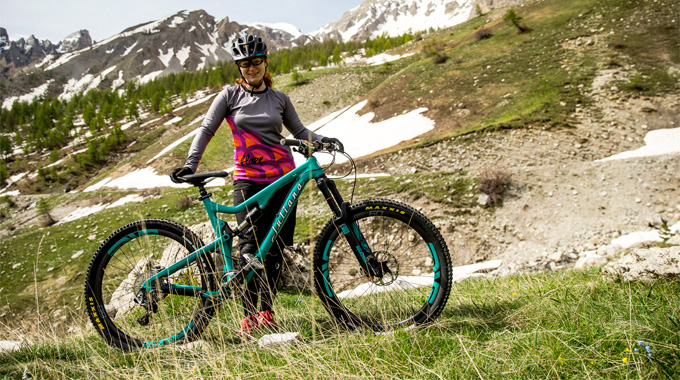
So you are doing the Megavalanche – awesome! Whether you are in it to win it, or just want to experience the atmosphere and the challenge, we salute you. It can be an intimidating challenge to take on, not least in terms of knowing what to expect, what kit to bring and what bike to ride.
Looking for some Last Minute Training Tips for the Megavalanche? We’ve got that covered!
As part of my preparation for the Megavalanche, I’ve been having a look around, researching online, and talking to people who’ve done it before (such as MTB guide and all-round Adventure Queen Julia Hobson) to get as many useful snippets of information I can find.
This isn’t as exhaustive list, so if you’re reading this and you can think of anything else that could help us Megavalanche newbies, please pop it in the comments section below. Believe me, it will be appreciated!
The BikeObviously, this is a pretty important part of the whole event. What bike to use for the Megavalanche. Although the course is mostly down hill, there is in fact some up, and a bit of across, so a long-travel bike designed for all-mountain use is ideal.

I’m opting to use the new Juliana Roubion. I’ve been using it for some weeks now in the Alps and I am confident it can take the steep, rough terrain. I’ve given it a hammering and it’s thrived. It’s ridiculously light (the top-end model comes with carbon wheels with the carbon frame) and climbs and descends like a dream. Plus I’m already used to riding a Juliana (my trail bike is one) so I know they suit me. Other great options are the Commencal Meta AM Girly, the Lapierre Zesty 327 AM, or the Orange Alpine 160 Diva.
It’s F-F-F-Freezing At The StartOn the race day, everyone has to go up the mountain painfully early in the morning. And then they have to sit around up there while the race gets under way. It is, by all accounts, bitterly cold up there. Bring something, or several somethings, warm to wear, and a beany hat.
I’ve heard differing accounts of the set up – some people have said that you can bring a coat up, and there’s a bag you can pop it in before the start, and you can collect it after the finish line. Others have said you have to carry it with you. I’m opting for something super-warm that packs away so I can carry it in my bag. My warm layer of choice is the Ultralight Down Hoody from Patagonia. It’s incredibly light, packs to a teeny tiny size, and is very snug.
The Snowy Start Line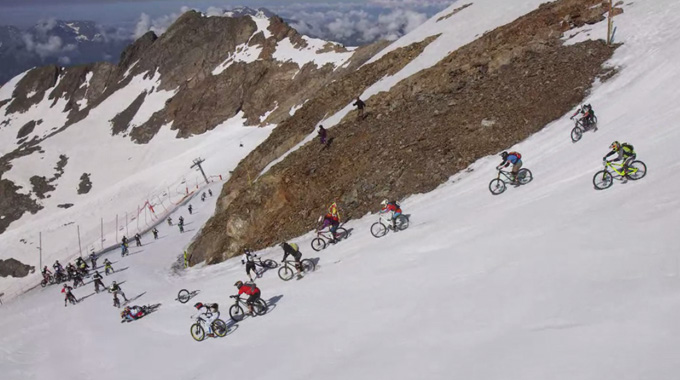
I have to admit this is the bit I am probably most nervous about. I’ve never really ridden in snow. However, the course does open a few days before the race so you will have time to practice, and it’s a must!
According to Julia, “It’s a good idea to practice running off the line at the start on the snow…most others will be doing this. Also practise bum sliding as well as trying to ride on the snow…often its quicker!”
I am probably going to go for the bum-sliding option. Elegant it aint, but for me it’s just about getting down the mountain. I am most definitely not in it to win it!
It It to Win It?If placing high is your aim, then getting ahead during that snowy section and the wide section immediately after is crucial. After that, the track becomes narrower single track, with few places to overtake. As it’s technically a race, you can’t really expect people to just pull over for you either.
Try and get ahead in the wide sections, think strategically, but also of course do try not to endanger anyone. That said, apparently there is a fair bit of argy-bargy that goes on in the competitive end of the race, which brings me nicely onto…
Body ArmourA full face helmet, knee pads and elbow pads are a must, and I’d strongly advise a back protector. The terrain is steep and rocky. Add to that the fact there will be several hundred other people riding at the same time as you, with elbows flying and unexpected crashes. You will need some protection!
What about full body armour? Although it’s not compulsory, and not everyone else wears it, a significant proportion of the riders do so you might feel a little intimidated if you aren’t.
I certainly would, so I will be wearing jacket with back protector, chest protector, shoulder and elbow pads from POC (the POC Spine VPD Jacket). The pads are fairly flexible, so it’s actually quite comfy to ride in. It’s not women’s specific – there are virtually no women’s specific body armour options – so the chest plate sits a bit funny over my boobs, and I look a bit like an American Footballer in it, but I reckon that’s a fair trade for the added protection.
The Course Itself
I’ve been told by several people that the trail should be rideable, and by ‘rideable’ I am reliably informed that means if you’ve ridden in the Alps before you should be find on most of it. I’ve also been told that the are some tricky sections, but Julia has some advice on this too;
“Don’t be psyched out by sections of the trail you find difficult or impossible to ride during practice. The chances are if you’re finding it hard everyone will be, and therefore there’ll be a big bottleneck there come race day. Practice running lines around stuff!”
So basically if you can’t do it, there’s a massive queue, or you don’t feel confident on that section, just hop off and walk it! That’s what I’ll be doing. I want to do as much as I can, but I’m realistic about my ability to do the whole course.
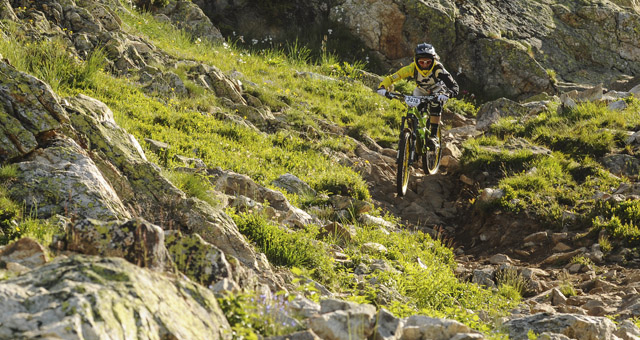
Goggles or Glasses
This is tricky. After a week of riding in the Alps, I’m a big fan of goggles. They stop rocks, mud and kamikaze bees flying into your eyes mid-descent. I’ve also apparently found the Holy Grail of goggles; one’s that don’t steam up! The SCOTT goggles are a funky blue in the lens department, but actually just increase the contrast on the trail when you look through them, and have steamed up less than my glasses when riding – that’s what I’m going to go for.
However, Julia suggests “unless you’ve got a really good goggle/helmet combo that won’t steam up when you’re sweating on the snow and breathing heavily at 3000m, wear glasses. I chose goggles, pulled them off when they steamed up, then when I tried to put them on lower down there was so much dust in them stuck to the condensation they were totally useless!
All About Attitude
If you are anything like me, I’m going to have a think and a chat to myself about what I want to get out of the race before hand, and plan accordingly. I am there just for the experience, and to see if I can get down the mountain, and fundamentally to enjoy the race. Therefore, I’m going to try and just enjoy it, laugh at the crashes (hopefully) and look forward to that post-race beer.
I’ll let Julia have the last word:
“Be prepared to be pushed, shoved, crashed into, but to keep getting yourself up and get to the bottom with the biggest feeling of achievement ever!”
Like this? You’ll love these!
Last Minute Training Tips for the Megavalanche
10 of the UK’s Most Remote MTB Trails
MTB Gloves Perfect for Summer Riding


